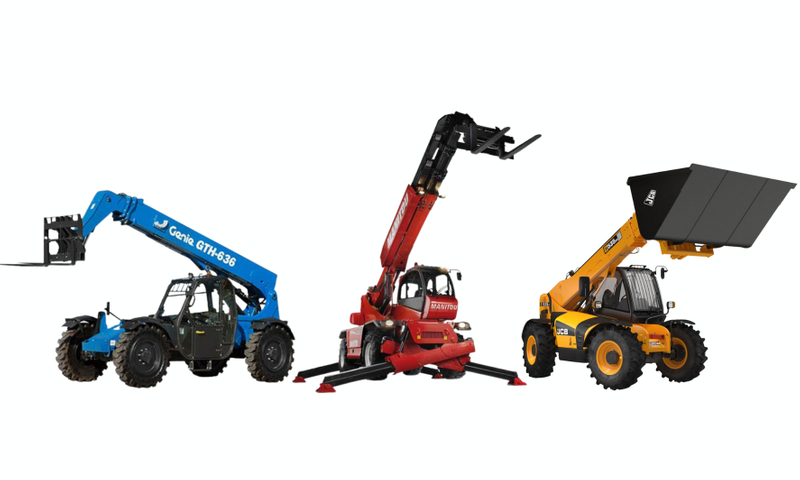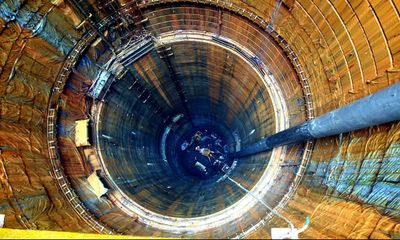© 2025 Powered by Antbuildz.com
© 2025 Powered by Antbuildz.com

A telehandler forklift is a versatile piece of equipment that is a go-to choice on construction sites, farms, oil fields, and many other job sites where lifting, moving and placing of heavy materials are required. These machines come in a range of sizes, lifting capacities, and offer a variety of features and attachments depending on the model that you choose.
Like any piece of construction equipment, telehandler forklifts come in a lot of different sizes and with several unique options. Before you rent a telehandler, make sure you are selecting a model that offers the required combination of power, maneuverability, lifting capacity and lifting height for your specific needs.
When you are selecting a telehandler forklift, the first thing you need to know is what are you going to be picking up and how high and far you are going to be lifting the material. If you have multiple items to lift, benchmark it with the heaviest cargo that you need to lift to determine your maximum lifting requirements.
You also need to determine where those materials are going. Are you going to be lifting it straight up, or are you lifting it up and over other specific areas and obstacles? This is important because the rated operating capacities for telehandlers can change when the telehandler’s boom is extended while lifting cargo up and over something.
The horizontal reach of a telehandler is the distinctive feature that sets it apart from a traditional mast forklift. The option to extend the telehandler boom makes it a much more useful machine on a job site with obstacles. A small telehandler may only have a reach of about 3.5m but larger models can reach up to 15m or more.

Once you know how heavy, how high, and how far (horizontal reach) you need to lift your loads, you need to put all that information together to determine the right capacity machine for your needs. Telehandler specs can be misleading if you were to simply look at one number. The maximum lifting capacity decreases as the boom is extended to maximum lift height or reach.
The load lift chart for each telehandler can be found inside the operator cab, in the operator’s manual, and the catalogue/brochure for ease of reference.
Factoring in the job site accessibility into your decision making when looking at telehandler models should not be overlooked. If you are working in an urban environment, you may not be able to use a heavy-duty, high-reach telehandler because it may take up more space than your site can offer.
In these situations, it makes sense to split up your cargo into smaller batches and opt for a smaller telehandler model. Otherwise, you may want to look at a telehandler that has a higher lift height to reach up and over the top of an obstacle on the ground.
The job site ground conditions should also be considered as the weight of a telehandler can be quite substantial. Most telehandler models are equipped with rough terrain wheels, but overly loose or unstable grounds can make the use of a heavy machine dangerous. A 3.6 tonnage capacity telehandler will weigh about 12 tons. And if you add in the weight of the cargo being lifted it can easily reach 16 tons of total weight being exerted on the ground.
If you want to have a versatile steering system, make sure you rent a telehandler that has three modes — front-wheel, four-wheel and crab. Telehandlers are the only piece of equipment that comes with these three varieties.
With the front-wheel setting, only the front two wheels shift to turn the body, much like a car. It is safe to use on roads and works well in open areas. Four-wheel steering allows for a much tighter turning radius, as it uses all four wheels to rotate the body and is better suited for crowded areas. The crab setting hardly needs steering at all. It allows the operator to turn all four wheels in the same direction, which means the telehandler can move diagonally or side to side to position the boom precisely.

Telehandlers can be outfitted with a wide range of attachments, including carrier forks, work platforms or carriages, and buckets. This also means that a telehandler can transform into a mobile elevated working platform similar to a boom lift.
Using the right size and type of telehandler attachment can increase productivity and reduce potential damage to the material being transported. You can also expand the capabilities of telehandlers through approved attachments and potentially eliminate the need for other types of loaders or MEWPs on the job.
After reading the above-mentioned, you should have a basic knowledge of the tips for choosing the right telehandler forklift for your projects. Telehandlers are incredibly versatile and used in various industries including but not limited to oil & gas, manufacturing, agriculture and many more.
Looking to rent telehandler forklifts and other construction equipment? Visit Antbuildz.com today to check for the best rental rates of all equipment types instantly. You can now Search, Compare, and Rent in just a few clicks.
Be it one day only or months, every equipment rental made on Antbuildz.com will be protected with Antbuildz Machinery All Risk Insurance which offers up to S$15,000 first loss coverage. We are the only company in Singapore that covers you with equipment rental insurance, and it’s FREE!
Any Questions?
WhatsApp or Call Us for a FREE consultation on the most suitable equipment for your site. We’re more than happy to assist!
Related Articles

Introduction of Telehandler Forklift Rental
What is Telehandler Forklift? Telehandler is also known as a telescopic handler, ...
Learn more
22 Jan , 2025

Rental Tips to Choose Between Electric vs Diesel Construction Equipment
Diesel or Electric power? These are two vastly different power sources, and ther ...
Learn more
22 Jan , 2025

The Deepest Secret in Singapore - Jurong Rock Cavern
The Deepest Secret of Singapore – Jurong Rock Cavern There is one of the open se ...
Learn more
22 Jan , 2025

The Status of Singapore's Maritime and Tuas Mega Port in the World.
Why Singapore is so important in the world maritime trade flow? Despite Singapor ...
Learn more
22 Jan , 2025